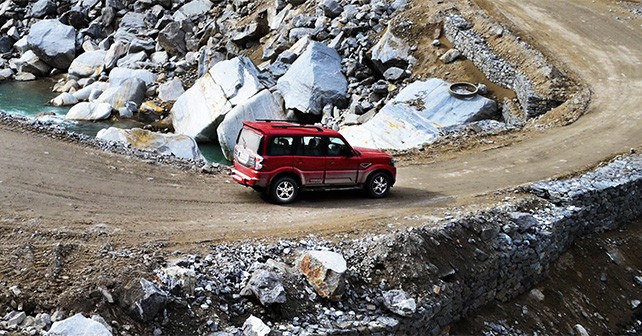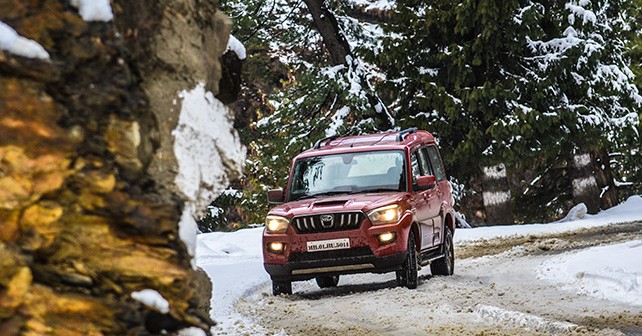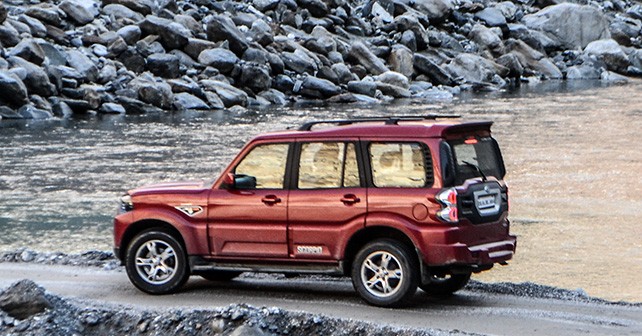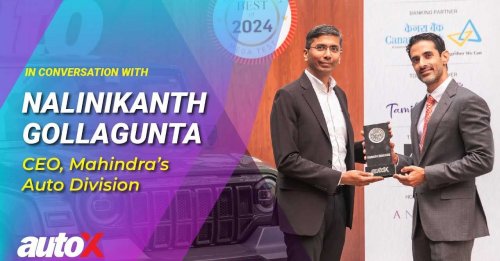A drive through one of the most treacherous roads in the world, through a towering mountain range with landslides, avalanches, and sub-zero temperatures for company – this is the most epic adventure you can experience in India. But only if you dare to do so...
There’s no place I would rather be than in the mountains. So, on a cold winter day in Delhi when my cousin Sunil – also a mountain man like myself – asked me if I wanted to drive up to Spiti Valley in the peak of winter, my immediate response was, “Of course!”
I’ve been on many tours to Ladakh, and on two separate occasions a trip through Spiti Valley had to be cancelled because of landslides. There’s no doubt that a road trip to Ladakh is challenging to say the least, but its popularity over the years has led to the construction of much better roads for the benefit of the increasing number of adventure junkies and thrill seekers. But while the roads to Ladakh are closed half the year because of heavy snowfall, the roads to Spiti remain open the year round. However, I was about to find out just how incredibly treacherous and terrifying the roads to Spiti Valley can be in the winter.
Before I could even think about how the conditions in the Spiti Valley might be, I was just excited by the idea of driving up to the mountains with my cousin. So, after I did some research, the alarm bells started going off. First of all, the temperatures average around -25 degrees Celsius. Secondly, what was a little more disheartening was that everyone I spoke to told me that I was an ‘idiot’ to drive to Spiti in the winter. Finally, after reading up some more, it turned out that even though the roads are open throughout the year, they are more often than not blocked by avalanches, landslides, or sometimes just covered in snow more than five-feet deep. We only had five days to drive to Spiti and come back, as I had the new Mahindra Scorpio media car that had to be returned in five days time, which meant that even one day of heavy snowfall would completely ruin our plan.
On the day my cousin arrived in Delhi, we checked the weather forecast. It turned out that it was snowing heavily in Narkanda. So, we decided to call one of the guesthouses in Kaza and ask about the current road conditions. We finally got through to one of the owners, and in a very perplexed and confused tone, he mumbled that there was no point in driving up to Kaza at this time because it was too risky. This was troubling. We had to come up with a back up plan if our Spiti trip wouldn’t pan out. Fortunately, my cousin knew someone in the Army, and we decided to ask him if he would be able to find out the current conditions of the road. He said that he would find out in the morning, so we decided to just go for it. If the conditions were too dangerous, we would just head elsewhere.
We left Delhi around 4am, and made it easily to Chandigarh by sunrise. After refuelling at Pinjore, we ran into a group driving SUV’s with ‘Snow Expedition’ stickers plastered all over their cars. We asked them where they were heading and their reply turned all our uncertainty and anxiety into a huge sigh of relief. They were also heading to Spiti Valley, and they had just got confirmation from one of their friends who had reached Kaza the day before that the roads were open. At that very same moment our contact in the Army called us and informed us that there had been heavy snowfall in Narkanda, and that if we could cross the town, then the rest of our journey would be possible. At least we now knew where we were heading – straight to Kaza!
When we reached Narkanda, the entire town was covered in a few feet of snow – but, luckily, snow ploughs were clearing it. We had to drive cautiously through Narkanda, and then head down to Rampur. The Scorpio drove incredibly well throughout, and kept us nice and warm in the minus two-degree Celsius weather. We reached Rampur and got a good night’s sleep. Day one completed.
The next day we set out at around 8:30am. We were down by the Sutlej river, and there was negligible snow in the valley. However, just a few kilometres down the road there was a massive landslide, but again there were earthmovers doing their job and we were through it in just a few minutes. Our journey continued through Wangtu and Barang, and then the roads took a turn for the worse. And, as if to drive home the point, a signboard warns you that you are driving on ‘the most treacherous road in the world,’ and rightly so. The road is hardly wide enough for a single vehicle, and in some places you’re driving along the mountain face with a thousand foot drop on the other side. It really is quite intimidating, and when you take into account the icy roads and the loose stones that continuously shoot past the front of your car, you begin to pray that you don’t get hit by a giant boulder making its way down the mountainside. The roads get wider in certain places, but for the most part they are narrow. The roads are so nerve-racking that it makes Ladakh seem like a walk in the park. There were several more landslides, which we had just missed, but the earthmovers were doing an impressive job of keeping the roads open.
We refuelled again in Puh, and then headed towards Khab – where the Spiti river meets the Sutlej. This is where the climb really begins, and after a few kilometres you soar from 7,000 feet to 13,000 feet and the reward is a breath-taking view. We were now surrounded by snow all over, and we must have been averaging about 10km/h. The sun was nearly down, and we were pretty far away from any form of life. The last time we saw another car must have been two hours ago, and we had no intention of driving through the night. Fortunately, an army SUV with two officers stopped and asked us where we were going. They suggested that we halt in Nako, as it was now dark and too dangerous to drive. Plus, our test Scorpio was not fitted with 4WD – and neither did we have snow chains on our tyres. We took their advice and headed to Nako.
Unfortunately, there was no guesthouse willing to take us in because it was late and they had nothing to keep us warm. The temperature had now fallen to -22 degrees Celsius. We then met another army soldier who offered us a hot meal at the army barrack in Malling. So we drove up there, enjoyed the hospitality of three soldiers and then slept in our car. We felt safe knowing that we were right next to an Army check-post. We kept the engine running the entire night with the heater on so we wouldn’t freeze to death. The Scorpio really showed its true colours in these hostile conditions.
The next day we decided to drive a little further towards Tabo. The hostile terrain and icy road combined to ensure that our journey to the mouth of the Spiti Valley took a long time indeed. The roads became even more daunting as we pushed forward before we decided to call it quits and head back. We knew that if we pushed forward we would not return to Delhi on schedule. The weather had been on our side for the first three days, and we had escaped landslides by minutes – so we didn’t want to push our luck any more. We were happy enough that we at least made it to the Spiti Valley.
I’ve had the privilege of driving in some of the most challenging roads in the world. But if you’re really looking for the adventure of a lifetime, drive to Spiti Valley in January – at your own risk!












































Write your Comment